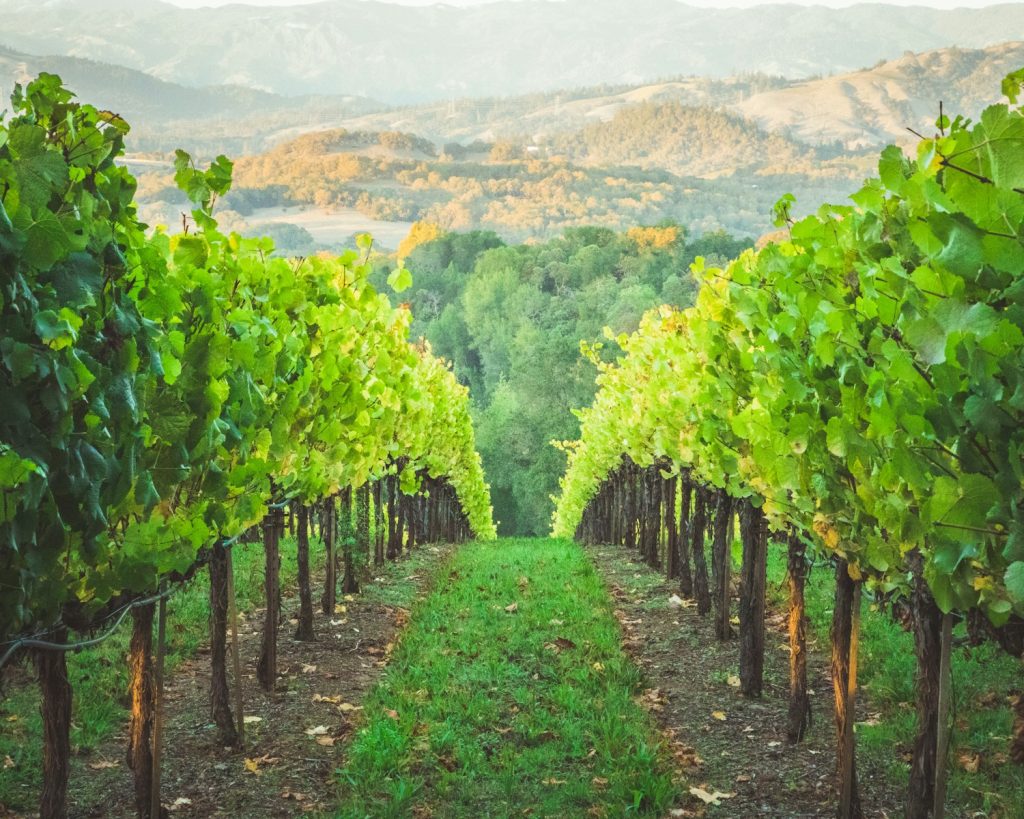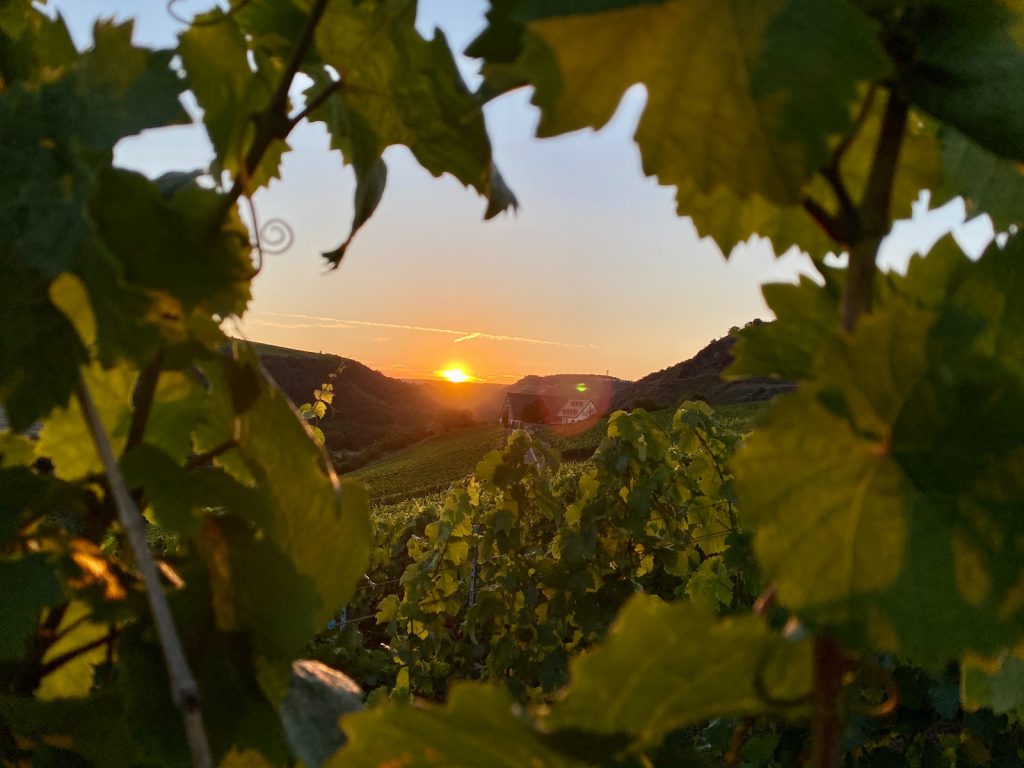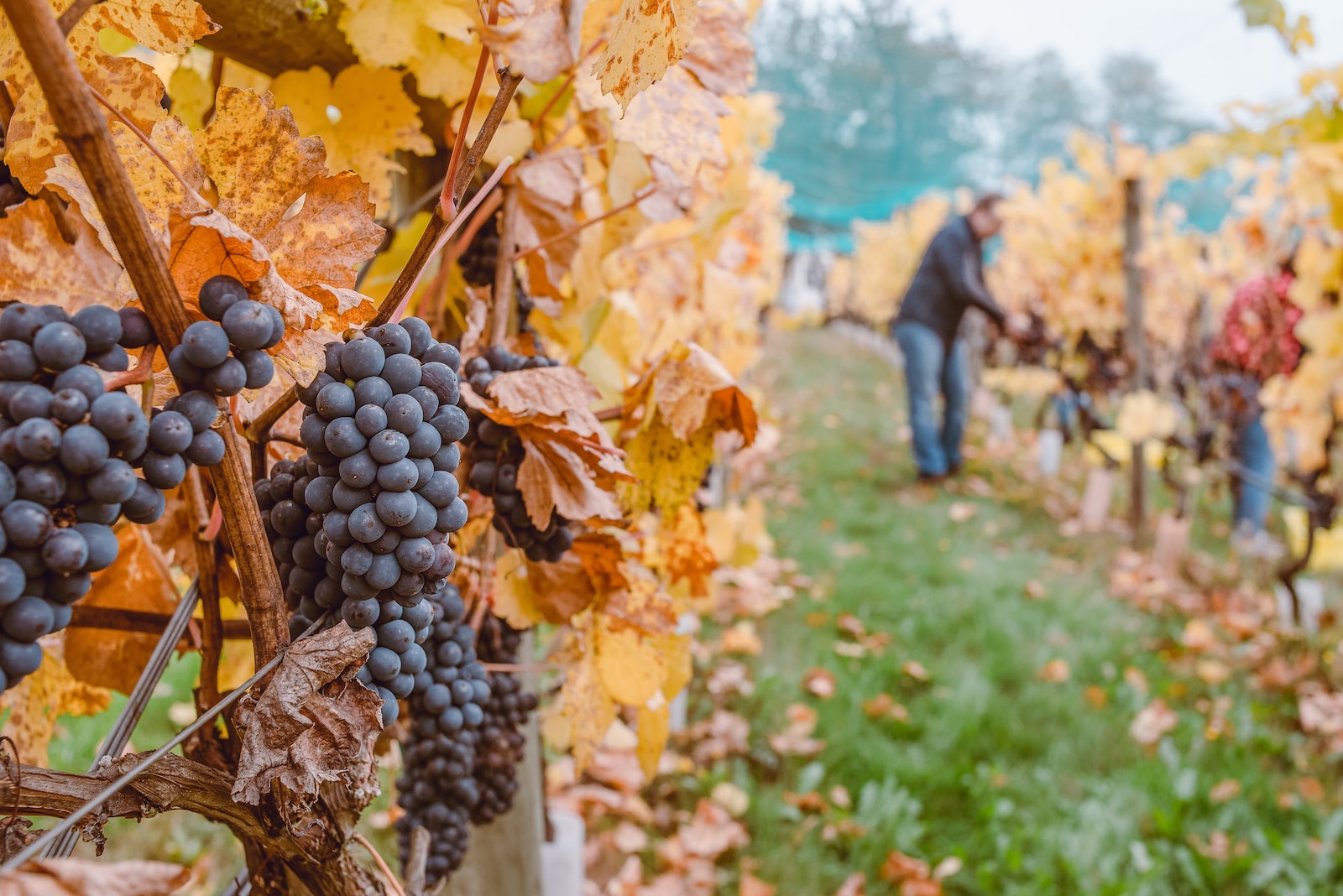Vineyards vs. Wineries: What are the Differences?
Answer: Vineyards cultivate the raw ingredients, and wineries handle the transformation of those grapes into wine. Some estates do both, but the two terms refer to distinct parts of the winemaking process.
Wine lovers know the delight of visiting a sun-soaked vineyard for tasting or touring an elegant winery to learn about production. But what exactly are the differences between vineyards vs wineries? Their distinct roles in crafting wine cause them to reside in very different locations. We explain the differences further in this guide.
Table of Contents
TL:DR: Vineyards vs Wineries
- A vineyard is the land where grapes are grown. It contains the grapevines and the fields/rows where grapes are cultivated.
- A winery is a facility where wine is made. Wineries take the grapes grown in vineyards and turn them into wine through crushing, fermenting, aging, blending, bottling, etc.
- Vineyards focus on grape cultivation and harvesting. Wineries focus on wine production and manufacturing.
- Many vineyards sell their grape harvest to external wineries/winemakers. However, some vineyards have their own on-site winery to make wine from their grapes. These are called estate wineries.
- Wineries may buy grapes from many different vineyards to make their wine. A vineyard’s grapes often go into wines from various different wineries.
- Vineyard work involves viticulture – the science and study of grape cultivation. Winery work involves oenology – the science and study of winemaking.
- Vineyards are primarily located in major wine regions with ideal grape-growing climates. Wineries can be located anywhere, even areas that don’t support vineyards.

Vineyards: Where the Grapes are Grown
Vineyards are the agricultural sites where grapes are cultivated on vines to eventually produce wine. The location of vineyards is dictated solely by optimal grape growing conditions.
Vineyards are typically found in major wine regions with ideal climates for maturing grapes. Factors like sunlight, temperature, soil, rainfall and topography determine which locations can support grape cultivation.
For example, the rolling hills of Napa Valley with its Mediterranean climate, fertile volcanic soil and diverse microclimates is prime vineyard land. The relationship between the vineyard and surrounding terroir is critical.
Grape growers monitor vine health, prune away imperfections, manage pests naturally, and determine ideal harvest times for perfect ripeness. The quality of the raw grapes depends on attentive winegrowing.

Wineries: Where Wine is Produced
In contrast to vineyards, wineries are facilities where grapes are turned into wine. Wineries contain equipment for crushing grapes, fermenting juice, aging wine in barrels, and bottling the finished products.
Unlike vineyards, wineries can be located virtually anywhere because they don’t rely on local climate and land. Grapes are transported from vineyards to wineries for wine production.
Many wineries source grapes from multiple contracted vineyards in preferred winegrowing regions to control quality. The grapes are then trucked to the winery for crafting into wine.
Urban wineries are popping up in cities without surrounding vineyards. The grapes arrive from rural vineyards and wine is produced onsite in downtown facilities. Tasting rooms create an accessible wine tourism experience.
So the core difference: vineyards provide the grapes, wineries transform those grapes into fine wine for us to enjoy! Their teamwork crafts the wines we love.
How many vineyards are there?
There are tens of thousands of vineyards worldwide, though the exact number is difficult to pinpoint. Here’s an overview:
- In Europe, there are over 3.2 million hectares (7.9 million acres) of vineyard area. France, Spain, and Italy have the most vineyards in Europe.
- In the United States, there are over 4,000 commercial vineyards cultivating over 225,000 hectares (556,000 acres) of grapes, mostly in California, Washington, Oregon and New York.
- In China, there are about 847,000 hectares (2.1 million acres) of vineyards, with the main regions located in Shandong and Hebei provinces.
- In Australia, there are approximately 146,000 hectares (360,000 acres) of grapevines spread across over 2,500 vineyards. The Barossa Valley and McLaren Vale have many iconic Aussie vineyards.
- In South America, Chile has between 12,000-20,000 vineyards occupying about 203,000 hectares (500,000 acres). Argentina has about 225,000 hectares (555,000 acres) of vineyards.
- In South Africa, there are an estimated 3,500 grape growers and 600 producer cellars working with vineyards.
- Vineyard numbers also continue rising in emerging wine regions like India, Brazil, Uruguay, New Zealand among others.
While an exact count is unavailable, a reasonable estimate would be over 50,000-60,000 vineyards worldwide, covering over 7 million hectares (17 million acres) across major wine-producing countries. The number keeps increasing as more vineyards open to meet global wine demand.
How many wineries are there?
There are approximately over 10,000 wineries worldwide today. Here’s a breakdown of winery numbers by major wine-producing regions:
- In the European Union, there are over 16,000 wineries. Italy has the most with over 4,000 wineries, followed by France with over 3,500.
- In the United States, there are around 11,000 wineries as per 2022 estimates. The state of California alone has over 4,700 wineries.
- In Australia, there are around 3,000 licensed wineries. The Barossa Valley, McLaren Vale and Hunter Valley are major winery clusters.
- In Argentina, there are about 1,500 wineries located across the Mendoza region and other parts.
- In Chile, winery numbers exceed 1,200. The Central Valley is home to many established Chilean wineries.
- In South Africa, there are over 600 wineries, with prominent regions like Stellenbosch and Franschhoek.
- China has over 1,100 wineries as the domestic wine industry grows. The main winery regions are Yantai, Zhangjiakou and Penglai.
- Canada has over 700 wineries, concentrated in Ontario and British Columbia.
- New Zealand has over 700 wineries too, primarily in Hawke’s Bay, Marlborough and Central Otago.
- Other countries like Spain, Germany, Portugal, Romania, Greece, Brazil, India etc. have hundreds of wineries each.
So in total, a conservative estimate for worldwide winery numbers would be in the range of 10,000 – 15,000 across major wine regions and upcoming destinations. The global count continues to grow steadily.
So there are less wineries than vineyards?
There are significantly fewer wineries than vineyards globally. Here’s a quick summary:
- Vineyards are estimated to number over 50,000 – 60,000 worldwide based on total vineyard acreage and average vineyard sizes.
- Wineries number only around 10,000 – 15,000 worldwide by comparison.
- Many vineyards supply grapes to third party wineries that purchase their fruit. One winery may source grapes from dozens of different vineyards.
- Only very large vineyards with sufficient production capacity have their own on-site, estate wineries. Most sell their harvests to external wineries.
- It’s expensive to set up a commercial winery due to costs of winemaking equipment, tanks, barrels, bottling lines, storage etc. Vineyard costs are lower in comparison.
- Wineries also require winemakers and skilled staff to produce wine. Vineyards don’t need similar expertise year-round.
- Permits, licensing, regulations and distribution considerations also make establishing a winery more complex than setting up a vineyard.
- So the much higher number of vineyards versus wineries makes sense given the differences in barriers to entry and operational requirements.
Thousands of vineyards worldwide supply grapes. Only a fraction go on to become full-fledged wineries due to the greater investments and efforts involved.
What are the largest wineries globally and in the USA?
Largest Global Wineries
- E&J Gallo Winery (USA) – World’s largest winery producing over 100 million cases annually.
- The Wine Group (USA) – Second largest in the world, produces around 60 million cases per year.
- Constellation Brands (USA) – Major global wine company producing 50+ million cases. Owns Robert Mondavi, Kim Crawford, and other labels.
- Treasury Wine Estates (Australia) – Leading Australian winery making around 30 million cases annually. Owns Penfolds, Beringer, and other wine brands.
- Accolade Wines (Australia) – Another huge Australian producer exporting wines globally.
Largest USA Wineries
- E&J Gallo Winery – Largest in America with production capacity of over 100 million cases per year.
- The Wine Group – Second biggest American winery after Gallo, making 60+ million cases annually.
- Constellation Brands – Among the largest wine companies in the US. Headquartered in New York.
- Trinchero Family Estates – Maker of Sutter Home and other wines. Produces 20+ million cases.
- Bronco Wine Company – Produces popular budget brands like Charles Shaw “Two Buck Chuck”. Makes over 40 million cases annually.
- Treasury Wine Estates – One of America’s biggest importers and distributors of wine at 20+ million cases.
- Delicato Family Vineyards – Major family-owned Napa winery producing around 10 million cases per year.
What percentage of the market does the largest wineries produce?
The largest wineries worldwide and in the US control a significant share of the total wine market:
- Globally, the top 5 wine producers (E&J Gallo, The Wine Group, Constellation Brands, Treasury Wine Estates, Castel Group) account for over 300 million cases in annual production.
- Total global wine production is estimated at around 18.5 billion bottles per year, which equates to 1.55 billion cases (12 bottles per case).
- So the top 5 producers alone make up around 19-20% of total global wine production.
- In the US, the top 5 wineries (E&J Gallo, The Wine Group, Constellation Brands, Trinchero Family Estates, Bronco Wine Co.) account for over 270 million cases in production.
- Total US wine production is around 850 million cases per year.
- So the top 5 US producers alone make up nearly 32% of total domestic wine production.
- Gallo alone has a market share of around 13% of US wine production.
- The top 10 biggest wineries control over 50% of the American wine market.
The largest global and US wineries hold very significant market shares and concentrate much of the wine production. The top producers operate enormous economies of scale. Smaller wineries account for the remaining 50% or so of worldwide and American wine output. The market continues to see consolidation among the largest wine conglomerates.

Wineries and Vineyards
Vineyards and wineries work in tandem, combining agriculture and production to create the complex craft of winemaking. Vineyards provide the raw grape ingredients from ideal grape growing climates. Wineries then add winemaking expertise, equipment and experimentation to transform grapes into refined bottled wine.
The distinction highlights wine’s connection to the land. Terroir infuses grapes with a sense of place, from the soil, climate and landscape of the vineyard. Human ingenuity compliments nature’s influence through masterful winemaking process and blending.
Understanding the vineyard and winery divide allows wine lovers to better appreciate the full journey of grapes from the vine to glass. We can value the combined importance of rich agricultural traditions and modern winemaking technology.
So the next time you sip your favorite wine, recognize the harmony between vineyards nestled in remote wine regions and skilled wineries that may be located anywhere. Their symbiosis crafts the complex wines we get to enjoy as the fruits of their collective labor.






